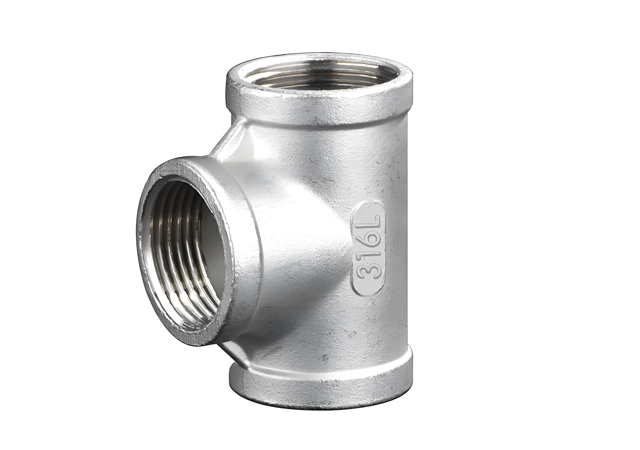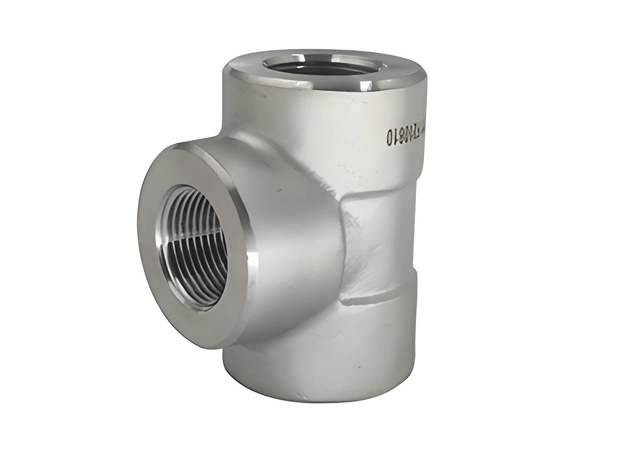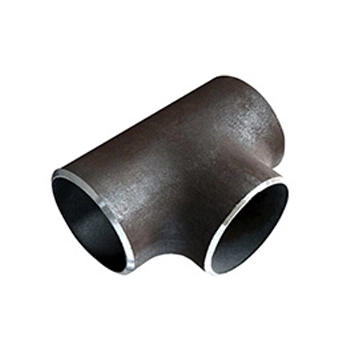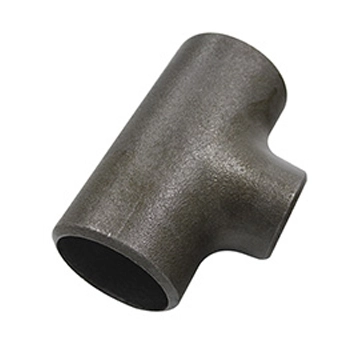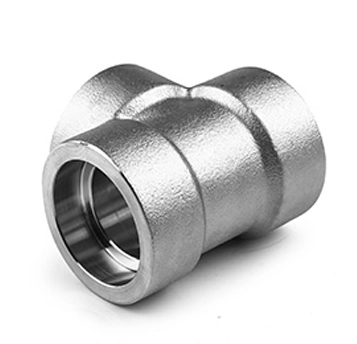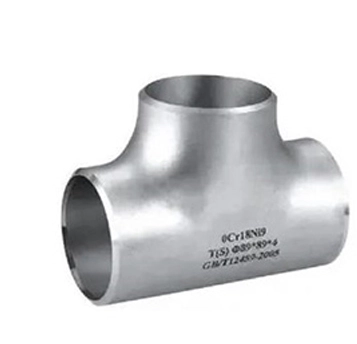Threaded Tee is a type of pipe fitting used to connect three pipes in a piping system. It is shaped like the letter "T" and allows for pipe branching, enabling the flow to split or combine within the system. Threaded tees are widely used in systems with low to moderate pressure and non-corrosive environments due to their ease of installation and reliability.
Equal Tee: All three openings are the same size.
Reducing Tee: The branch connection is smaller in size than the main pipe.
Design:Shaped like the letter "T" with three openings: one inlet and two outlets (or vice versa).
Each opening has threads (either male or female) for connecting to pipes.
Connection Method:The pipe is screwed into the threaded ends of the tee.
Thread sealant (e.g., Teflon tape or pipe dope) is applied to ensure a leak-proof connection.
Materials:Commonly made from materials like carbon steel, stainless steel, brass, or PVC, depending on the application.
Sizes:Available in a wide range of sizes, typically from 1/8 inch to 12 inches (DN6 to DN300).
Threaded tees are typically manufactured in accordance with the following standards:
ASME B16.11: Specifies dimensions, tolerances, and manufacturing requirements for forged fittings.
BS3799: British standard for threaded fittings.
MSS SP-83/SP-97: Additional standards for threaded fittings
Carbon Steel: ASTM A105, ASTM A350 LF2/LF3, ASTM A694 F42/F46/F56/F60/F65.
Alloy Steel: ASTM A182 F11/F12/F5/F9/F91/F92/F22.
Stainless Steel: ASTM A182 F304/304L/304H, 316/316L, 321, 310S, 317, 347, 904L.
Duplex Stainless Steel: ASTM A182 F51, F53, F44.
Ease of Installation: No welding or special tools required; can be installed with basic tools.
Disassembly: Can be easily removed or replaced, making maintenance simpler.
Cost-Effective: Lower installation costs compared to welded fittings.
Versatility: Suitable for a wide range of materials and applications.
Lower Strength: Not as strong as welded fittings, making them unsuitable for high-pressure or high-temperature systems.
Leak Potential: Threaded connections are more prone to leaks, especially under vibration or thermal cycling.
Limited to Smaller Sizes: While available in larger sizes, threaded connections are less common for large-diameter pipes.

 EN
EN
